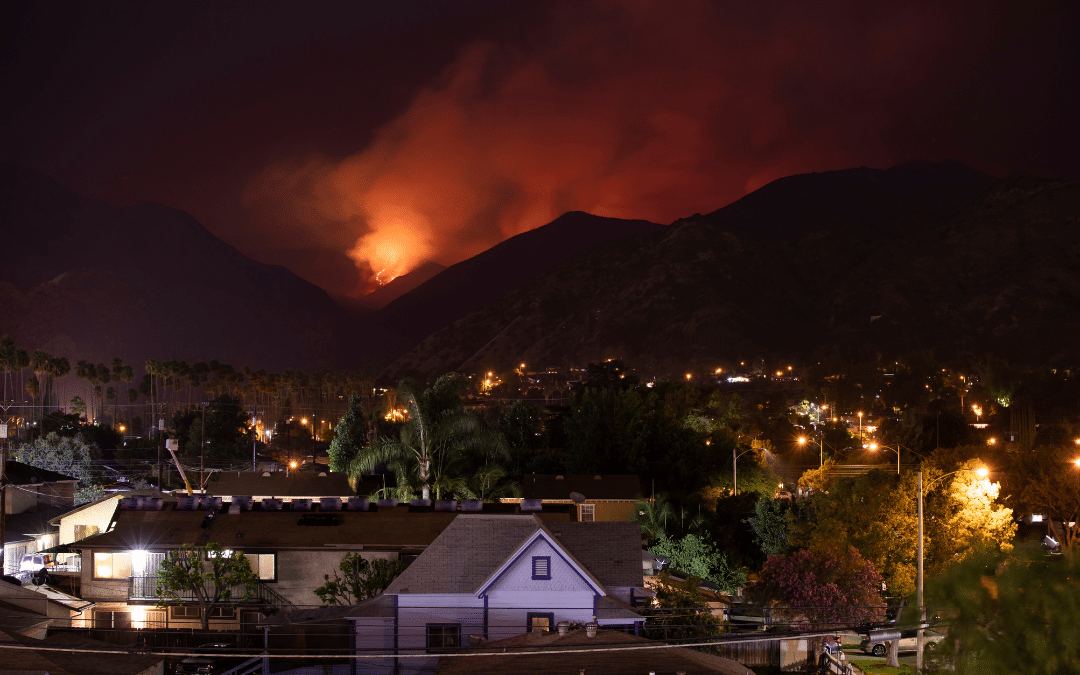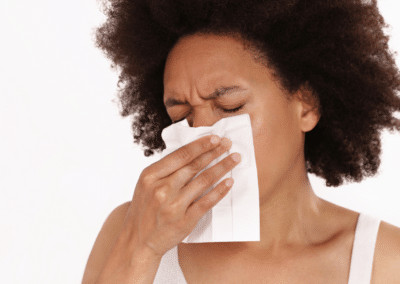In 2022, California saw an estimated 7,490 wildfires throughout its state, a trend that’s been steadily increasing over past six years. The scale of these fires has destroyed homes, caused deaths, worsened air quality throughout the world, and has exposed millions of people to harsh particulate matter. Given the increasing frequency of west coast wildfires, and some recent developments that further harms California residents, let’s detail clear methods to help protect you and your loved ones from dangerous forest fires.
2023 California Wildfire Outlook
Fortunately, America saw a heavy snowpack throughout Winter and Spring of 2023, which means that California’s vegetation will retain its moisture for an extended period of time. As the summer continues, however, fire experts predict this moisture to transition into a heavy drought, which creates prime conditions for fires to spread. With peak wildfire season expected to hit Northern California from August through September, and Central/Southern-California’s wildfire season expected to hit from September through November, experts predict that approximately 400,000 to 1-million Californian acres will burn by the end of 2023.
Wildfire smoke is a complex mixture of gases and small particles that can quickly change depending on the weather, what is burning, the temperature of the fire, and how far the smoke has traveled. In recent years, California has become North America’s central hub for wildfires; so much so, in fact, that the insurance giant State Farm has begun halting the sale of new home insurance policies statewide in 2023. This decision was explained in a recent statement, which read, “State Farm General Insurance Company made this decision due to historic increases in construction costs outpacing inflation, rapidly growing catastrophe exposure, and a challenging reinsurance market.” While existing customer’s insurance policies won’t be impacted by this decision, it’s discouraging to see that California’s wildfires have gotten so severe that insurance companies have ceased to protect residents statewide.
In addition to protecting Californian homes, wildfire smoke is composed of particulate matter smaller than PM2.5, which makes air pollution a concern for public health nationwide.Particulate matter is a generic term for particles suspended in the air, typically as a mixture of both solid particles and liquid droplets. This mixture contains significant quantities of respiratory irritants that are both organic and non-organic, including carbon dioxide, carbon monoxide, hydrocarbons formaldehyde, acrolein, and even hazardous water vapor.
How to Protect Yourself from Hazardous Wildfire Smoke
The smoke from California wildfires can easily cause harm across America this summer, and even around the world. Fortunately, there’s steps we can take to protect our health when the local AQI (Air Quality Index) reaches unhealthy levels. The Air Quality Index (AQI) is a rating system originally developed by the U.S. Environmental Protection Agency (EPA). In more than 800 countries, air pollution levels are measured daily and ranked on the official AQI scale. Categorized into six color-coded and numerical categories, understanding how to read this index can benefit people worldwide to better protect themselves from the harmful effects of wildfires and air pollution. The official AQI rating system can be read as followed:
- 0-50 (Green): Good air quality.
- 51-100 (Yellow): Moderate air quality. Air quality is acceptable.
- 101-150 (Orange): Unhealthy air quality for sensitive groups.
- 151-200 (Red): Unhealthy air quality.
- 201-300 (Purple): Very unhealthy air quality.
- 301 & Higher (Maroon): Hazardous air quality.
Wildfires expose populations to multiple environmental hazards, from combustion due to the fire itself, to air pollution from the smoke and byproducts such as ash. In addition, when wildfires move through communities, chemicals in plastics and other manufactured products can be released into the air from burning structures and furnishings. Some people are at higher risk from particle pollution exposure. Those with heart or lung disease, including asthma and COPD (chronic obstructive pulmonary disease), older adults, and children. The effects of smoke range from eye and respiratory tract irritation to more serious disorders such as reduced lung function, bronchitis, and exacerbation of asthma. PM2.5 can be inhaled deep into the lungs where it can cause irritation that may lead to inflammation that affects other parts of the body.
O2 Nose Filters
Fortunately, protecting yourself and loved ones from pollutants caused by wildfire smoke has never been easier. By combining 3M’s innovative filtration science with O2 Nose Filter’s elegant design, we’ve created the most discreet and effective solution to protect society from harmful airborne pollutants. With 3M’s patented filter leading the charge to fix this global issue, let’s dive into the specifics of this technological breakthrough.
3M’s patented AEM™ (Advanced Electret Media) filter technology relies on the principles of electrostatic attraction. The high capture ratios and extended breathability attributed to 3M’s AEM™ material allow airborne particles to be captured within the filter. Rather than using a ‘screen’ approach to block the passage of particles, the charged fibers act as ‘magnets’ to retain particles while still allowing air to pass through – making O2 Nose Filters both breathable and effective. While our nasal passageways try their best when it comes to filtering harmful airborne particles, they aren’t perfect. That’s why O2 Nose Filters are such an effective solution when it comes to improving our mental and physical health. Nose filters are a discreet, effective option to protect against airborne particulate matter. The O2 Nose Filter uses 3M’s patented AEM™ electrostatic technology to capture allergens, viruses, and other particulates, making them a valuable tool for anyone who wants to drastically limit the pollutants and pollens they breathe in daily.

BLOCK IT OR BREATHE IT
Click here for a FREE (+S&H) sample pack to see which size works best for you!



